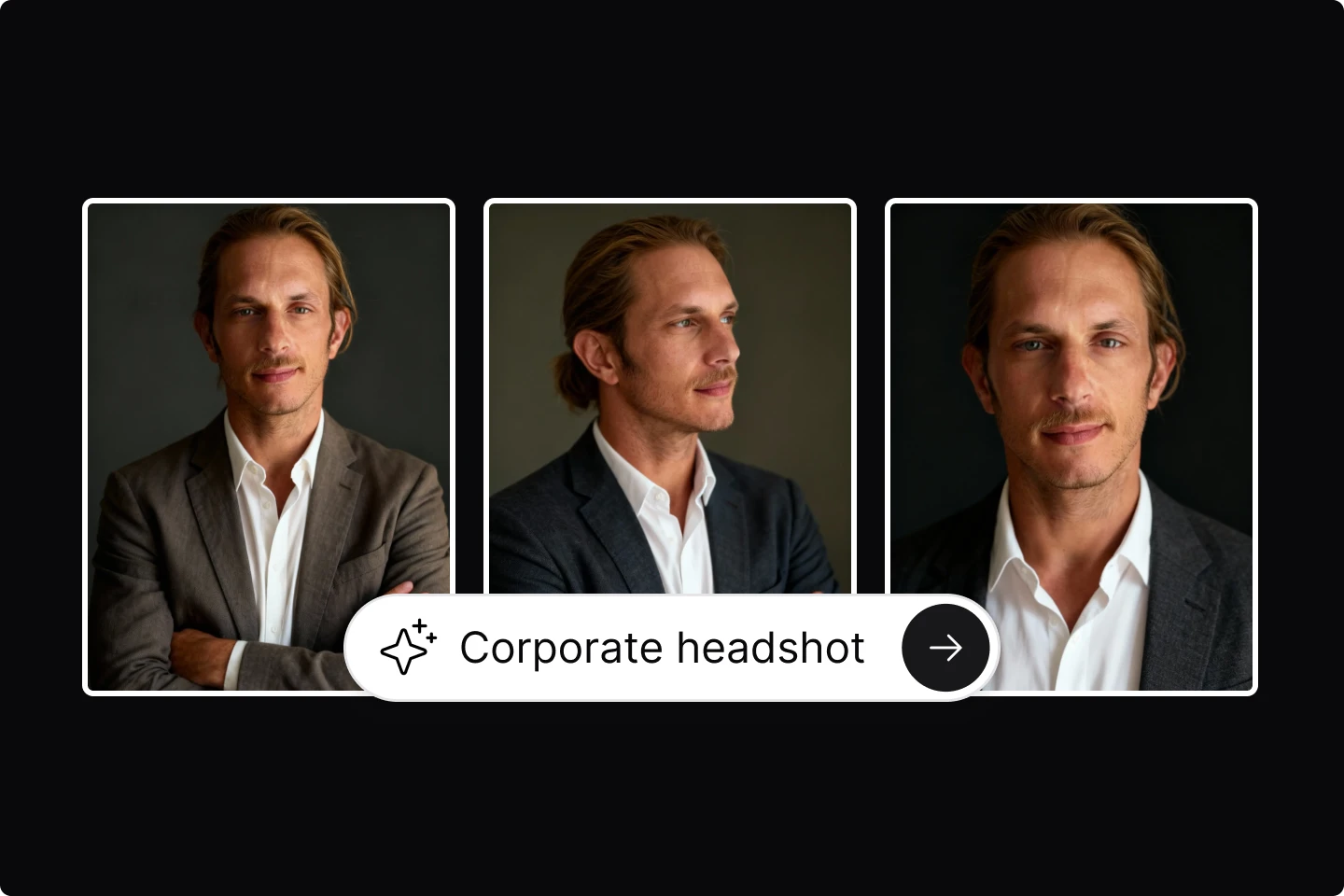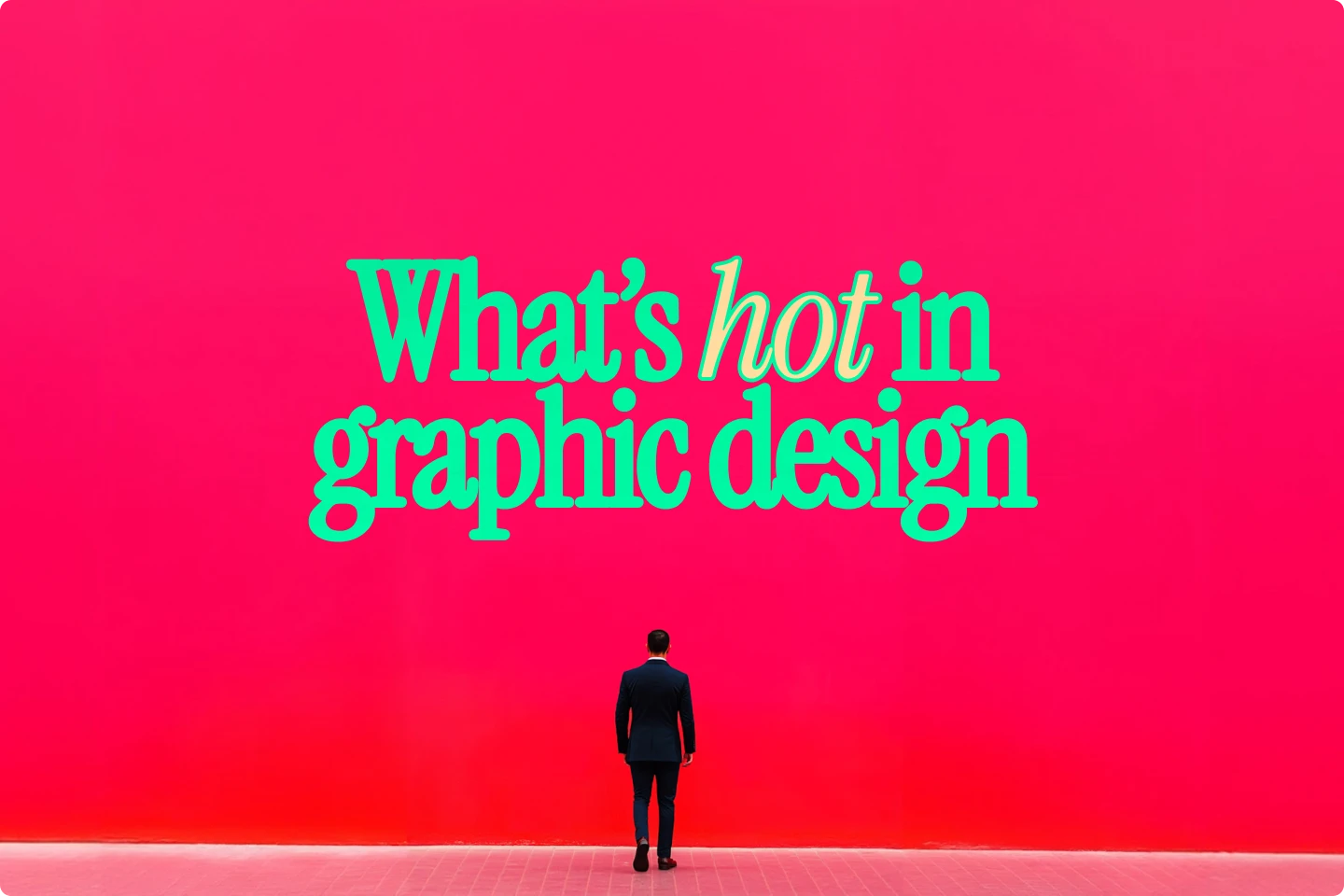De muerte a los genéricos: cómo contribuye Kuba con Lummi a acabar con los diseños aburridos


Es hora de conocer a Kuba.
Hubo un tiempo en que la fotografía de archivo dominaba la web. Ya sabes: empresarios sonrientes dándose la mano en una sala de conferencias iluminada por el sol, un equipo de creativos sospechosamente diverso apuntando notas adhesivas, o el clásico: bueno Harold dándote el visto bueno más vergonzoso que hayas visto en tu vida. Estas imágenes fueron el fondo de pantalla visual de Internet, el germen de muchos memes, los marcadores de posición obsoletos que olvidarías en cuanto apartaras la mirada.
Sin embargo, las cosas están cambiando en el mundo de las imágenes de archivo y el diseño.
Diseñadores como Cuba, colaborador de Lummi y uno de los primeros en adoptar las herramientas de diseño de IA, forman parte de un movimiento creciente que busca imágenes que parezcan frescas, intrigantes y que nunca se usen en exceso. «Las imágenes de archivo del sector deportivo suelen parecer genéricas y utilizadas en exceso», explica Kuba. «Gracias a la inteligencia artificial, tuve la flexibilidad de crear imágenes coherentes que se ajustaran a la perfección a la energía de la marca, en lugar de obligar a las fotos de archivo a que quepan».
Nos pusimos en contacto con Kuba para obtener más información sobre su experiencia con la IA y Lummi y sobre cómo el mundo del diseño es un momento poderoso. Esto es lo que tenía que decir.
Del stock a la sustancia
El trabajo reciente de Kuba para una marca deportiva es un buen ejemplo. Como no tenía nada que ver con la fotografía de marca, se apoyó en una combinación de herramientas de inteligencia artificial (incluidas Lummi y Midjourney) para crear desde cero un lenguaje visual audaz y coherente. ¿El resultado? Un sitio web que obtuvo una mención honorífica en Awwwards.

Pero Kuba no busca premios. «Y lo que es más importante», afirma, «ha demostrado cómo las imágenes de IA seleccionadas pueden dar a los diseñadores un control total sobre el estilo, el estado de ánimo y la coherencia, lo que se traduce en un producto final más intencionado y único».
Esa es la palabra mágica: intencional. Si bien el stock tradicional se basa en el atractivo masivo, las imágenes de IA se centran en captar la atención. En lugar de buscar en bibliotecas interminables con la esperanza de encontrar algo «lo suficientemente parecido», los diseñadores generan exactamente lo que necesitan. El resultado es un diseño que se siente hecho a mano, sin renunciar a nada.
No solo sus activos típicos
Lummi, una comunidad creciente de imágenes de IA creadores, desempeña un papel clave en el proceso de Cuba. Pero no solo lo usa para obtener imágenes terminadas, sino que lo trata como una especie de trampolín creativo. «Lummi ha sido especialmente útil para poner en marcha rápidamente los conceptos iniciales y alinearse con los clientes en una dirección visual», afirma. «Pero más allá de los activos, Lummi ha sido una gran fuente de inspiración».

Inspiración, en este caso, significa remezclar. Mezclándose. Jugando. Y cuando dispones de potentes herramientas creativas, una sola idea de Lummi puede provocar una reacción en cadena de experimentación. «He compartido gran parte del trabajo X empecé con algo que descubrí en Lummi. Es una excelente manera de generar ideas y mantener las cosas en marcha».
Lo que nos lleva al siguiente punto: la IA no mata la creatividad. La alimenta.
Creatividad a toda marcha
¿Cómo describirías el estilo característico de Kuba? Fondos abstractos, líquidos y futuristas que parecen como si alguien le hubiera pedido a Dalí que diseñara una página web 3 después de tres cafés expresos y una sesión en Cinema 4D. «Seguí viendo esta estética en los sitios web de Web3 y me gustó la idea», afirma. «Pero la ejecución siempre me pareció extraña y demasiado genérica. Quería ir más allá, refinarlo y hacerlo visualmente más interesante».

Así que hizo lo que haría cualquier diseñador: generó más de 250 de estos fondos. Luego los compartió en la comunidad de Figma, donde se han descargado más de 6.000 veces. Y no solo están guardados en carpetas. Estas imágenes se utilizan en presentaciones, publicaciones en redes sociales, presentaciones, secciones de héroes y proyectos de marca en toda regla.
¿Por qué? Porque no parecen relleno. Se sienten como una vibra. Un estado de ánimo. Una elección.
Y nacen de un proceso. «Lo que me mantiene enganchado es el proceso en sí mismo», dice Kuba. «Ajustando, mezclando e iterando, intentando crear algo abstracto que no existe en el mundo real. Las posibilidades son infinitas... No hay un producto final ni final, puedes seguir explorando las ideas».
Este es el polo opuesto a las bibliotecas de valores. El punto no es encontrar la imagen—es para encontrar una idea. Perseguir un concepto visual y convertirlo en algo nuevo.
El nuevo flujo de trabajo: más rápido, más inteligente y más extraño
Por supuesto, la IA no solo hace que las cosas sean más bonitas. También hace que las cosas sean más rápidas.
«Desde el punto de vista del flujo de trabajo, las herramientas de inteligencia artificial han hecho que todo sea increíblemente rápido», señala Kuba. «La iteración y la alineación de las imágenes son mucho más rápidas con herramientas como Midjourney y Lummi. Se acabaron los desplazamientos interminables para encontrar la imagen perfecta».

Y esa velocidad se suma. Los diseñadores dedican menos tiempo a buscar y más a dar forma. Las plataformas de creación de prototipos como Lovable aceleran aún más las cosas, mientras que herramientas como Claude o ChatGPT se convierten en copilotos creativos. «Puedes hablar con ellos como con un socio comercial», dice Kuba, «intercambiando ideas de un lado a otro. Es un cambio increíble en la forma en que trabajamos».
Sí, la IA puede resumir las notas de las reuniones y organizar tu Google Drive. ¿Pero es un verdadero superpoder? Desbloquea el impulso creativo.
No reemplazar a los diseñadores, sino empoderarlos
No se trata de automatizar al diseñador para eliminarlo de la escena. Todo lo contrario.
«La IA mejora la creatividad si se usa correctamente. Definitivamente no la reemplaza», subraya Kuba.
Lo que estamos viendo no es el fin de los trabajos de diseño. Es una transformación de ellos. Los diseñadores que se decantan por la IA no subcontratan su visión, sino que la amplifican. Se están convirtiendo en directores de arte de sus propios universos visuales, sin las limitaciones de cualquier cosa que Shutterstock considere «vanguardista».
Y eso está dando sus frutos de manera real. «Solo en las últimas semanas», afirma Kuba, «he visto a más personas del sector de la inteligencia artificial que han recurrido a proyectos de marca y diseño web que de cualquier otro sector».
Hay un patrón claro: las empresas nativas de la IA quieren diseñadores nativos de la IA. Y esos diseñadores están creando una nueva vía creativa que es más rápida, experimental y, francamente, más divertida.
Un futuro para los valientes
Entonces, ¿cómo será la próxima ola de diseño web?
«La verdadera creatividad importará más que nunca», predice Kuba. «Dado que la IA facilita la creación de diseños genéricos, el trabajo que parezca nuevo destacará. Y valdrá más».

No se trata solo de verse bien. Se trata de moverse rápido. Lanzar rápido. Iterando más rápido. Y hacerlo todo con estilo. «Pasar meses perfeccionando algo antes del lanzamiento ya no tendrá sentido», explica Kuba. «Sacar rápidamente una versión sólida y perfeccionarla en función de los comentarios reales será el camino a seguir».
Visualmente, espera un minimalismo con un toque diferente. Diseños limpios, claro, pero con expresiones de marca llamativas, capas interactivas, estilo 3D y tal vez incluso un toque de magia de WebGL. «Las marcas correrán mayores riesgos porque tener un sitio web «agradable» no será suficiente para destacar».
El estado del nuevo mundo del diseño
En una era en la que el diseño gira cada vez más en torno a la identidad, la originalidad y la velocidad, confiar en las mismas fotos de la biblioteca ya no es suficiente. Por eso, más que nunca, creativos como tú utilizan las imágenes de Kuba para sus propios proyectos.
Estas herramientas dan a los diseñadores el poder de crear ideas que aún no existen. Para convertir los moodboards en realidad. Diseñar a la misma velocidad con la que piensan.
Y de la mano de creadores como Kuba, están ayudando a definir un nuevo lenguaje visual, un lenguaje extraño, salvaje y maravillosamente intencionado.
No más colegas de negocios dándose la mano. ¿El futuro del diseño? Es líquido.
Boletines de diseño gráfico a los que deben suscribirse todos los creativos




.webp)

